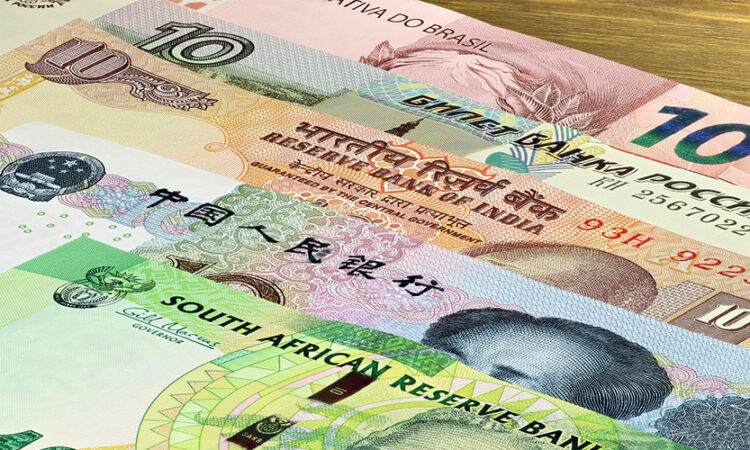
In January, five new members joined the Brics bloc: Saudi Arabia, the United Arab Emirates, Egypt, Iran and Ethiopia. This means that five new currencies are in the pot for payments and mutual holdings, joining those of Brazil, Russia, India, China and South Africa.
The Brics mechanism is lacking a vehicle currency like the one provided by the European Payments Union in 1950, where several currencies – weak ones as well as strong ones – were cleared. In the end the D-Mark emerged as the main vehicle currency after the dollar served in the interim.
While the renminbi will be the main currency for trade, payments and settlements within Brics, the role of a new prime holding currency offers fresh possibilities. Regarding trade, Saudi Arabia and the UAE will most likely trade with China in renminbi, independent of the denominator currency. This will significantly affect the global supply of renminbi and further internationalise the currency.
The transactions will be recorded by Swift and foreign exchange reserves by the International Monetary Fund. Conducting trade in local currencies will strengthen the Saudi riyal and the UAE dirham within the Brics bloc.
Which currency will emerge as the Brics vehicle currency in the short and medium term is still open. This currency will have to be strong and offer stable relations with the rest of the world – first and foremost the dollar – and be freely convertible. The renminbi has shown its limitations in playing this role due to depreciation and exchange rate volatility in addition to Chinese restrictions on financial accounts and a highly managed offshore renminbi market.
Only two real contenders
Among the new currencies the only ones that meet these criteria are the Saudi riyal and the UAE dirham. Both currencies have full capital account convertibility, for residents and foreigners, and have been pegged to the dollar since the mid-1990s. While the Saudi government might have some qualms about internationalising its currency, the UAE seems more market friendly, open to trading in all the other Brics currencies. As a market maker it could fulfil the role of vehicle currency in the short term.
The well-developed financial centre in the UAE would offer Brics partners cash deposits or dirham instruments, or freely convert Brics currencies into dollars. Offshore renminbi holdings were never free of restrictions and exchange rate risk. This will satisfy the need for dollars, which have been denied to them by China. Buying dirham cash or instruments poses no risk as they can be freely converted into dollars at a fixed exchange rate.
The UAE financial system would have to play the role of the EPU, accepting strong and weak currencies, such as rupees for remittances or renminbi for imports from China, and disposing of them or adding to their portfolio of reserves. These will be held by private financial institutions as well as the Central Bank of the United Arab Emirates. They would step in where political agreement has failed to provide a mechanism.
The only open question at the moment is in which direction the pressures for appreciation of the dirham or the depreciation of weak currencies within Brics will lead. The revaluation of the D-Mark in the European case is worth studying.
Herbert Poenisch is Senior Fellow, Zhejiang University, and former Senior Economist, Bank for International Settlements.


